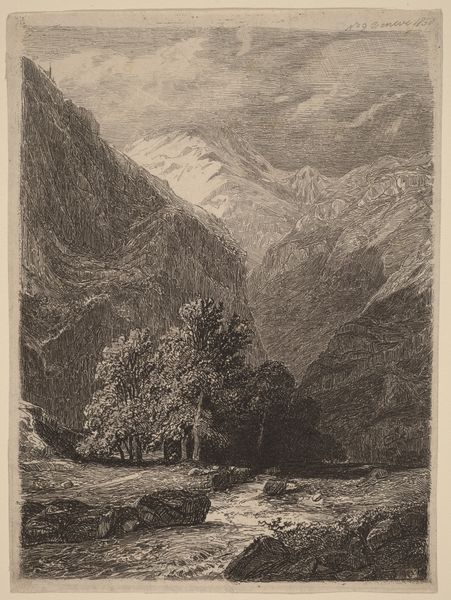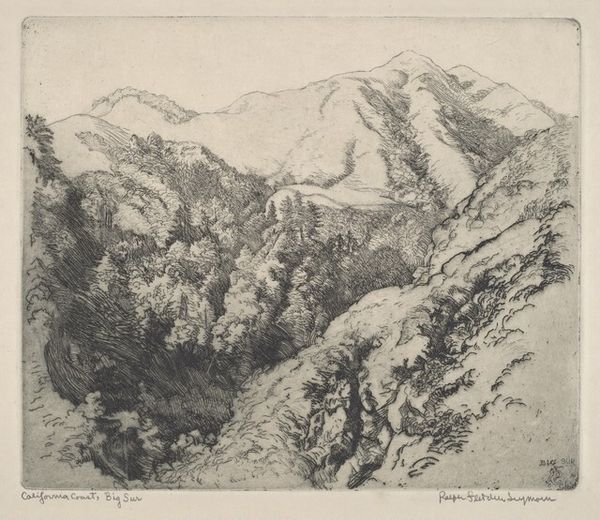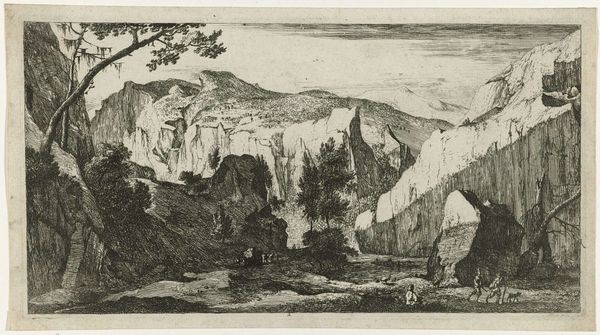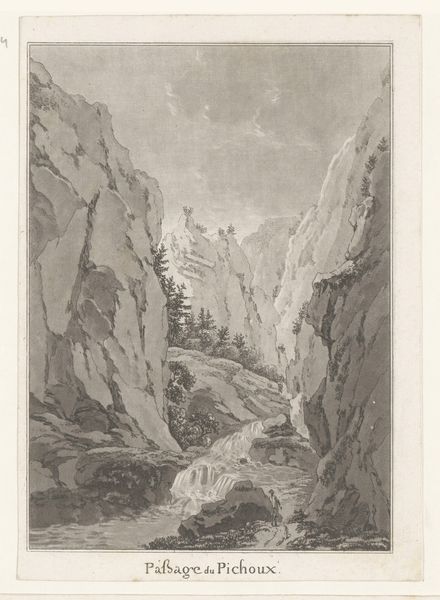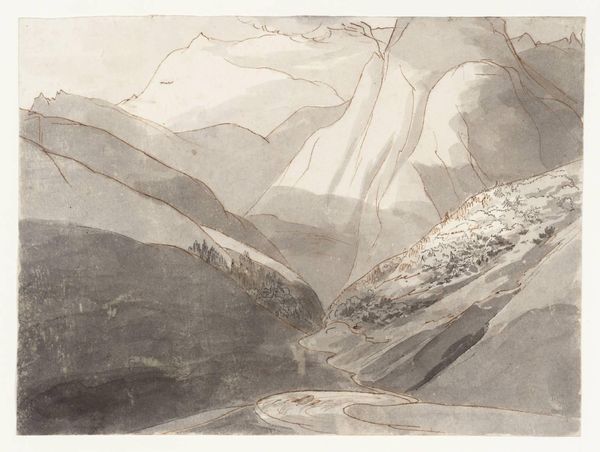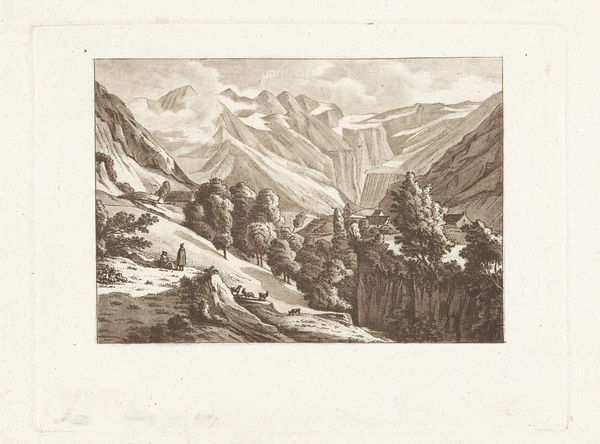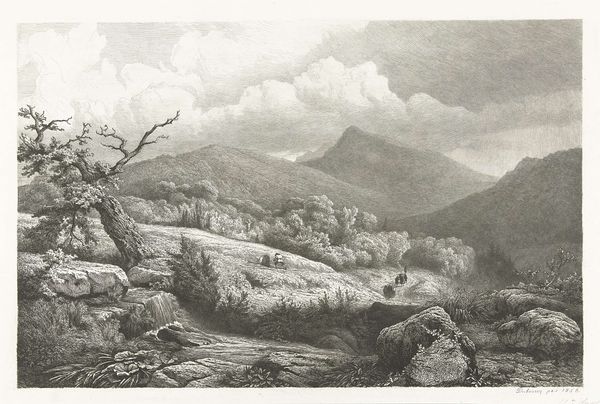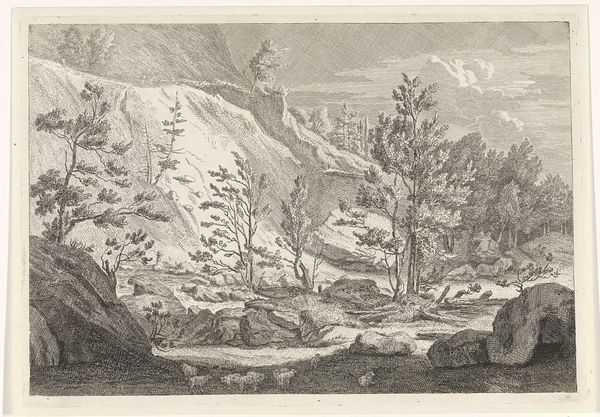
print, etching, engraving
# print
#
etching
#
landscape
#
waterfall
#
engraving
#
realism
Dimensions: height 170 mm, width 230 mm
Copyright: Rijks Museum: Open Domain
Editor: Here we have Pierre Louis Dubourcq’s "Rocky Landscape with Waterfall," created sometime between 1830 and 1858, using etching and engraving. The details created with the stark monochrome really capture the rushing power of nature. What’s your take on it? Curator: The image certainly presents a picturesque scene, but what strikes me is how the processes of etching and engraving are deployed. Consider the labor involved in meticulously creating those lines, replicating a natural scene for consumption. Do you see how the "realism" isn't just about the subject, but about making nature reproducible? Editor: So you’re saying that the artistry is not simply imitating nature, but in the work needed to create a printed representation that can be distributed? Curator: Precisely. This etching allows the "experience" of nature, or rather a particular aesthetic ideal of nature, to become a commodity. The artist’s labour, and the material constraints of printmaking become essential parts of its meaning. Think about how the distribution changes the perception. Editor: I hadn't considered it in that way, I was caught up in the image itself, but the choice of the materials is a message in itself. Thanks. Curator: And the distribution network, and the economy it feeds, also must be factored in to the conversation.
Comments
No comments
Be the first to comment and join the conversation on the ultimate creative platform.





